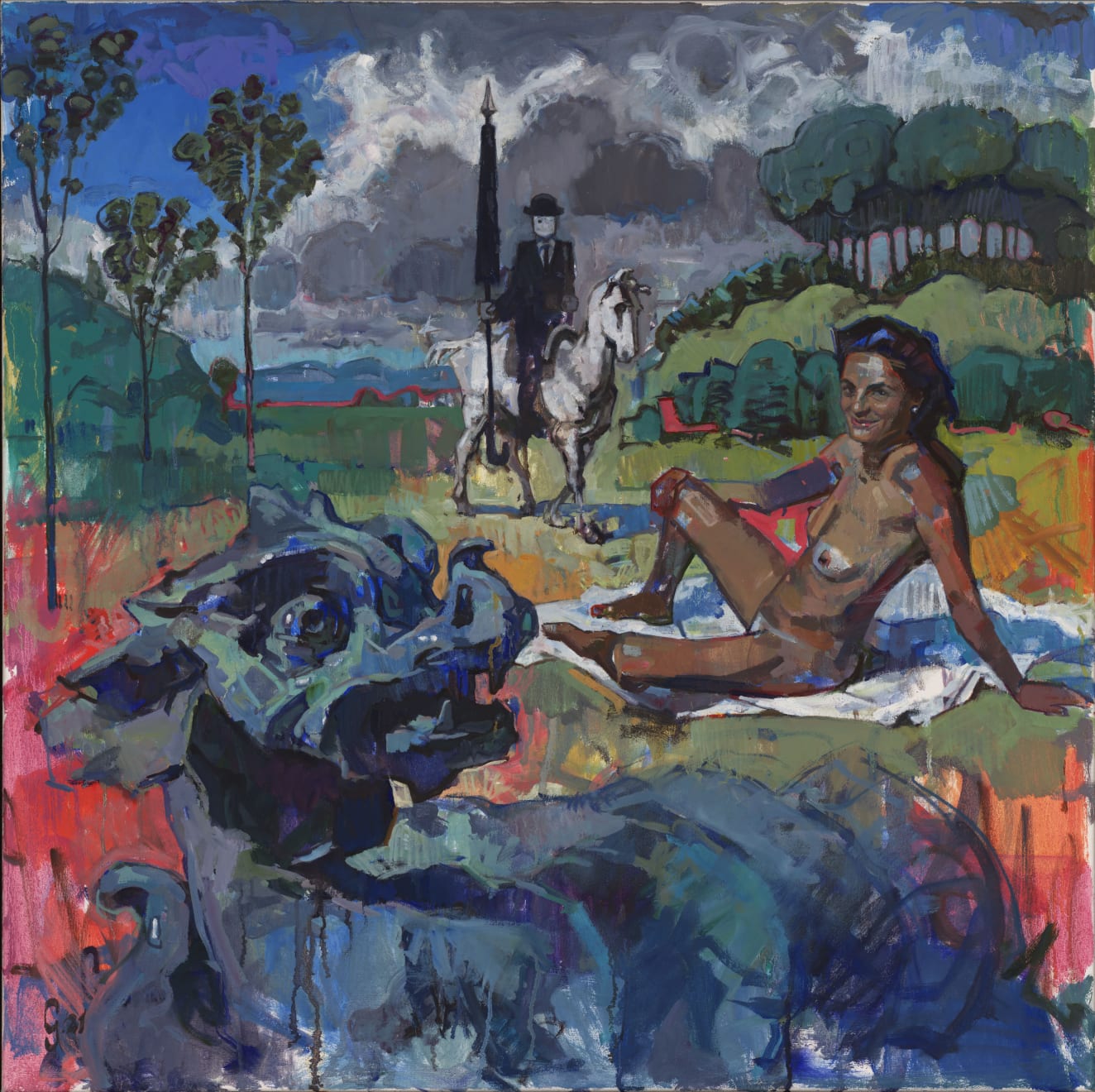Andrew Gow British, b. 1978
This piece provides a fresh perspective on the iconic tale of St George and the Dragon, drawing inspiration from even older tales like that of Perseus and Andromeda or Gilgamesh. These stories traditionally depict the valiant hero overcoming evil, symbolising humanity's battle against chaos and nature.
However, the story unfolds from the dragon's perspective in this rendition. The creature is bewildered, fearing an impending confrontation. The modern-day St George character is depicted not as a paragon of Christian virtue but as a corporate man driven by greed. The maiden, contrary to being an innocent damsel, is portrayed as a manipulator.
The characters have been thoughtfully derived. The dragon, evoking more pity than fear, is inspired by a sculpture in Tuscany. The maiden's character is based on a tumultuous personal acquaintance. In contrast, the St George character combines traits from Daumier's Don Quixote, Magritte's iconic "Man with a bowler hat", and Alex from "A Clockwork Orange", representing a blend of naive knight, faceless businessman, and rogue youth. The setting borrows from Raphael's paintings and the landscapes of Cortona.
The underlying message is that modern man, rather than embodying bravery and virtue, represents selfishness and destruction. In this narrative, humanity is the real agent of chaos, endangering nature and itself. Despite our achievements, our hubris places us and our environment at risk.
Much like "The Bullheaded Thinker", the art style is significant. It's influenced by the Fauvist movement, once derided as "wild beasts". With its unrestrained expression, this style contrasts sharply with our technologically advanced society and provides the artist with a refreshing release from more stringent portrait work.


